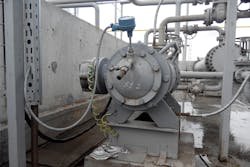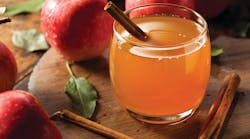If you attend one of my flow measurement seminars, you will hear me say various times that the viscosity of a fluid is the ability of the fluid to flow over itself. Water has a viscosity of approximately 1 centipoise and flows easily over itself. More viscous fluids such as honey have higher viscosities. The actual viscosity of the fluid is dependent upon its temperature — where viscosity decreases (often dramatically) with higher temperature. Comparing the ability of cold and hot honey to flow illustrates this relationship.
The viscosity of Newtonian fluids is constant regardless of how the fluid is stressed. Conversely, non-Newtonian fluids exhibit different viscosities depending on how the fluid is stressed. Stated differently, these fluids may not flow under certain stress conditions but will flow under these same conditions when stressed differently.
For example, ketchup will not flow from its bottle until it is stressed (and then it may flow excessively). Similarly, some slurries can become more viscous when pumped at higher pressures. This can result in a strange phenomenon whereby providing additional pumping pressure can actually reduce the flow rate because the higher apparent fluid viscosity increases the pressure drop in the downstream piping system.
Most flowmeters are affected in some way by viscosity such as mechanically via slippage, hydraulically by affecting the pressure drop across the flowmeter or indirectly via Reynolds number. For the purposes of flow measurement, it is generally assumed that the fluid at hand is Newtonian even if it is not. This is because there are many unknowns with regard to the apparent fluid viscosity and its effect on flowmeter operation, so a nominal viscosity is selected for selection and sizing.
In summary, sometimes it is pragmatic to bury one’s head in the sand and assume a constant viscosity. However, it may be more practical to apply a flowmeter that is relatively unaffected by viscosity in these applications.
David W. Spitzer is a regular contributor to Flow Control magazine and a principal in Spitzer and Boyes LLC, which offers engineering, seminars, strategic, marketing consulting, distribution consulting and expert witness services for manufacturing and automation companies. Spitzer and Boyes is also the publisher of the Industrial Automation INSIDER. He has more than 40 years of experience and has written more than 10 books and 350 articles about flow measurement, instrumentation and process control.
Spitzer may be reached at 845-623-1830 or via spitzerandboyes.com. Click on the “Products” tab to find his Consumer Guides to various flow and level measurement technologies.



